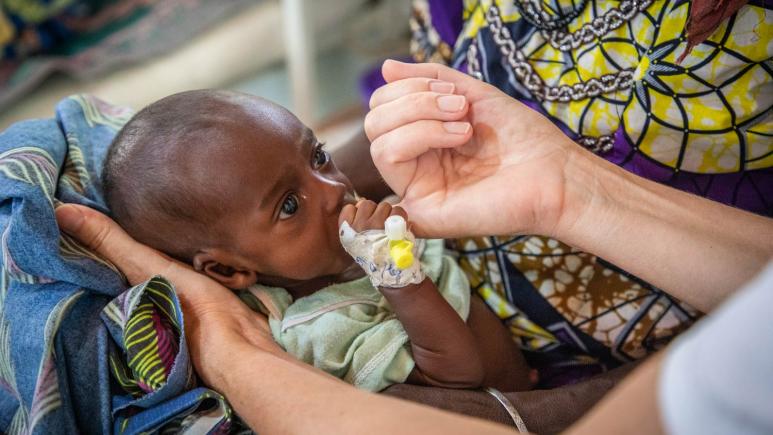Understanding of the aetiology and pathophysiology of kwashiorkor, Madarounfa, Maradi, Niger
Recruitment in progress
The recruitment of participants is ongoing, as well as their observation during hospitalization, management at the ambulatory therapeutic feeding centre (ATFC) and their evolution up to one month after their discharge from the ATFC. The main challenges consist in maintaining a strict cold chain and in obtaining stool and urine samples for children upon admission. The study started in September 2018 and is expected to end in the coming weeks. The laboratory analysis and study results might thus be expected in 2020.
The study in a nutshell
Kwashiorkor is a major public health problem in many parts of the world. The presence of oedema distinguishes the clinical picture of kwashiorkor from the picture of marasmus, a more frequent form of acute malnutrition characterized by a severe wasting. The specific aetiology of kwashiorkor remains elusive despite well-designed studies over the last decades. In collaboration with Médecins Sans Frontières (MSF) and the University of Ghent, Epicentre is conducting a case-control study at its research center in Niger to provide a better and more coherent understanding of the mechanisms and pathogenic pathways leading to kwashiorkor. Blood, urine and faeces samples will be sampled and sent to Belgium. They will be subjected to metabolomics, metagenomics, and proteomics analysis in order to determine biochemical markers and microbial genetic factors that could potentially distinguish children with kwashiorkor from children with marasmus and children without malnutrition. This has the potential to open doors for developing effective prevention strategies, improving management and treatment, and reducing the mortality of kwashiorkor.







